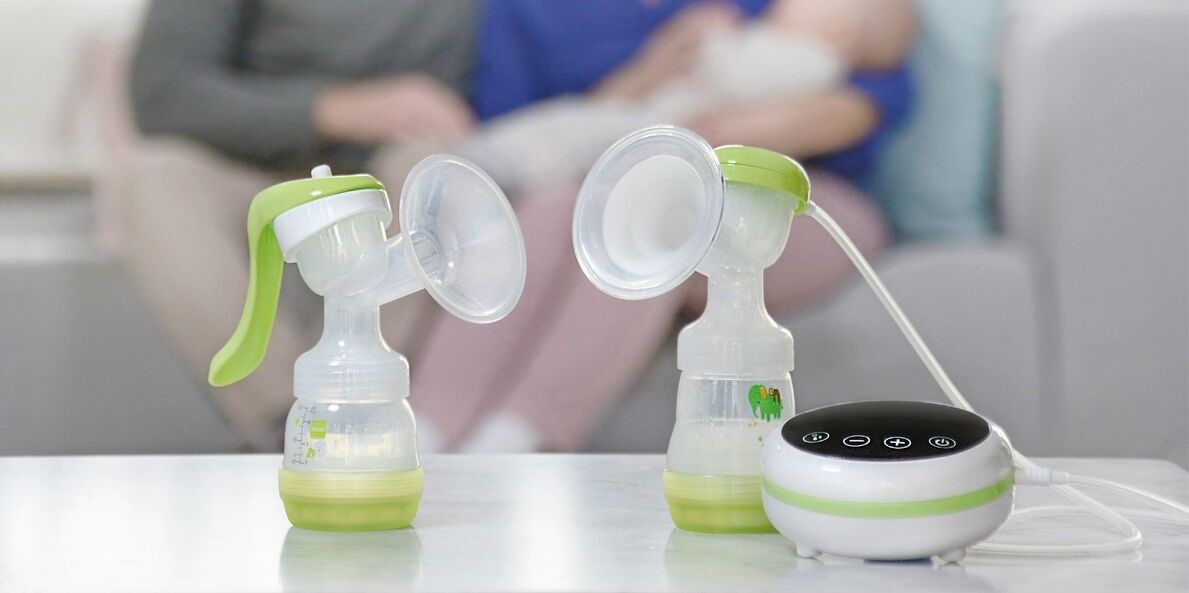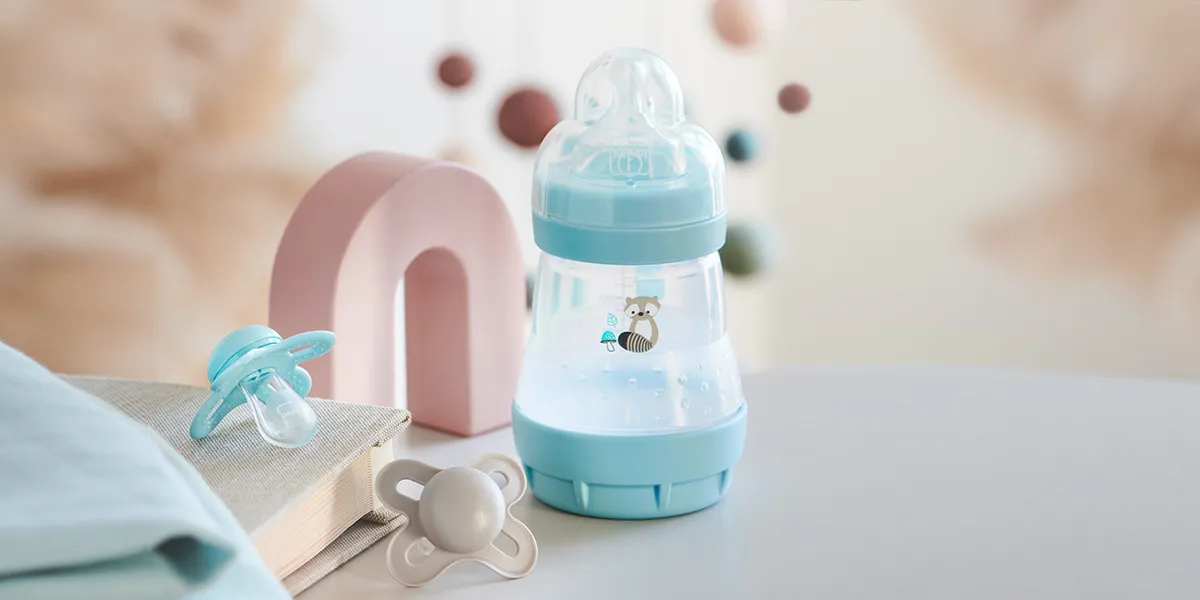Weaning is an important step in your life – both for you as a mother, and for your baby. It marks the end of your wonderful and emotional breastfeeding journey, and raises many questions: When should I stop breastfeeding? How long does the process last – and what is the right, most natural way to stop breastfeeding? How does rapid weaning work while ensuring milk ducts do not become blocked – and what other challenges might I face? In this article, we focus on these issues, and also provide useful tips and advice on getting through this special phase of the mother-child relationship.
Weaning naturally: When is the best time?
First the most important thing: There is no ideal or right time to stop breastfeeding. The recommendation from the World Health Organization and other authorities is that babies should be exclusively breastfed during their first six months. After all, breast milk is a true superfood, perfectly tailored to the needs of babies, and constantly adapting.
Solids should be introduced from the start of the seventh month of life as the need for iron, zinc, and vitamins B and D increases from this time onwards, and it is easier to meet these needs through complementary feeding. Particularly suitable at first are fruit and vegetable puree of various kinds, and in different combinations, with potatoes, cereals, as well as potatoes, meat, and fish, being added later. The first pureed food marks the start of weaning, and is a special step in your journey together.
You can continue breastfeeding while your baby is getting used to the new food, because according to the WHO, it is advisable to keep feeding babies breast milk until at least two years of age, together with other foodstuffs. However, it is up to you and your baby alone to decide how long breastfeeding should continue.
What signs indicate that you should stop breastfeeding
Certain behavior on the part of your baby can indicate that your child is “ready” to be weaned:
- Your baby suckles only briefly at your breast and is quickly distracted by other things
- Forks, spoons and so on suddenly become interesting – and your baby finds what is on them particularly interesting
- You feel that you are no longer producing enough milk and your baby does not seem to be full
What signs do not indicate that you should stop breastfeeding
- Many mothers consider that going back to work is a signal that they should stop breastfeeding. However, you are legally entitled to breastfeeding breaks, and you can also pump milk during short breaks, or after you finish work, which can be warmed up ready for bottle-feeding your child.
- Even being pregnant again is no compelling reason to start weaning
- Although it can be uncomfortable when the first teeth come through, you will both quickly get used to it, and your baby will also learn to feed at the breast when cutting their first teeth
- Although mastitis can be painful, it is not a reason for rapid weaning – quite the opposite: in some cases, an overfull breast can even make the inflammation worse
- In the event of illness, or when taking medication, find out from your doctor whether it is OK to continue breastfeeding.

How long does weaning last?
Similarly, if you are looking for an answer to the question of exactly how long weaning lasts, it is safe to say: There isn’t one, as it varies from baby to baby. If your baby has older siblings, it may be that they had a mouthful or two of solids off their sibling’s plate, and so got used to pureed food more quickly.
Weaning generally lasts several weeks to several months, depending on how quickly your baby accepts a wide variety of solids. After all, this phase is also an exciting one for your baby, when the old routines slowly fade away and they are gaining new impressions and experiences. The gastrointestinal tract also needs a certain amount of time to get used to the new foods and for digestion to become established.
Weaning the right way: Different methods
There are different methods of weaning, which you can choose according to your individual needs and preferences. A distinction is generally made between two common approaches:
Gradual weaning
This method includes a slow and gradual reduction of breastfeeding over a certain period of time. Start by replacing one breastfeeding session with solids, and gradually increase this until breastfeeding stops completely.
Sudden weaning
Sudden weaning is a faster method, where breastfeeding ends the next day. This can be a challenging experience for some mothers and babies, as it is such an abrupt transition. During this process, it is important to be there for your baby with a lot of love and understanding, and to replace the lost breastfeeding sessions with plenty of cuddles. Sudden weaning is necessary, for instance, if you are taking certain medication that is not compatible with breastfeeding.
Challenges when weaning
The weaning process can be associated with different challenges. It is the physical and mental barriers that mothers face when weaning that are of the greatest concern:
Rapid weaning without blocked milk ducts
As your body adapts to the new situation, you may experience breast tenderness and pain, especially with sudden weaning, but also with natural weaning – and you may suffer with blocked milk ducts. Blocked milk ducts happen when your breast is not emptied completely during breastfeeding, and the milk that is left behind cannot drain away. As a result, the milk ducts become blocked, which is unpleasant and painful. Blocked milk ducts are especially common at the start of breastfeeding, as the baby cannot yet manage to drink all the milk, and empty the breast.
But blocked milk ducts may also occur when weaning. This is hardly surprising: After all, you have produced milk constantly over the past few months. Now that you are gradually replacing breastfeeding with solids, your body first has to get used to a reduced demand for milk. This generally happens automatically, but it is also safe to say: Every body is different, and reacts differently to changing circumstances.
The following tips may be useful for weaning without blocked milk ducts, or for clearing existing blocked milk ducts:
- Use cold compresses to reduce the blood circulation in the breast and to prevent inflammation. Cooling is recommended after latching the baby on, hand expressing or pumping blocked milk ducts.
- Massage your breast to preempt blocked milk ducts. If the pressure is too much, you can also hand express or pump a little milk. But be careful: You should really only release enough pressure to relieve the pain. This is because too much pumping signals to your body that it needs to keep on producing milk – and the cycle will continue
- Sage tea has the effect of reducing the supply of breast milk, as it inhibits the production of prolactin – you should drink three cups a day. Peppermint tea has also proved effective, due to its inhibiting effect on milk production.

Weaning: Tips and Tricks
Summarized here once again are our best tips and tricks to make natural weaning – ideally without blocked milk ducts – go smoothly, and to make it easy for you and your baby to get through this special time together:
- For months, breastfeeding has meant that you have both enjoyed a special, physical closeness. If weaning takes away this closeness, you and your baby will miss spending time together. So during this period, make sure that you give your baby a lot of affection and attention: Cuddle and hug as much as possible, and find new routines and rituals that you can enjoy together. Whether reading aloud, singing together, or playing with cuddly toys – your creativity knows no bounds!
- Weaning requires time and patience from both of you. If you have the choice, you should choose a time when you are not coping with too many other distractions in life. If your baby has just started teething, or has just joined a playgroup or daycare nursery, it is better to find some other time to stop breastfeeding.
- Over the past few months, your baby will have developed the “superpower” of being able to smell your milk. So if you notice when holding your baby in your arms that they are burrowing towards your breast, Dad can help out and take the child from you. This seductive aroma is not so pervasive there, and baby is easier to distract.
- Don’t worry if introducing solids does not work straight away! Until now, your baby has been spoiled by the perfect composition of your milk, and knows nothing else. So a certain skepticism about the new diet is only understandable. Mixing the fruit or vegetable puree with a small amount of mother’s milk can be helpful, both for increasing acceptance and for making the taste “more familiar”.
- If you want to play it safe, talk to other mothers before weaning starts, or seek professional support to give you a better understanding of weaning.




























